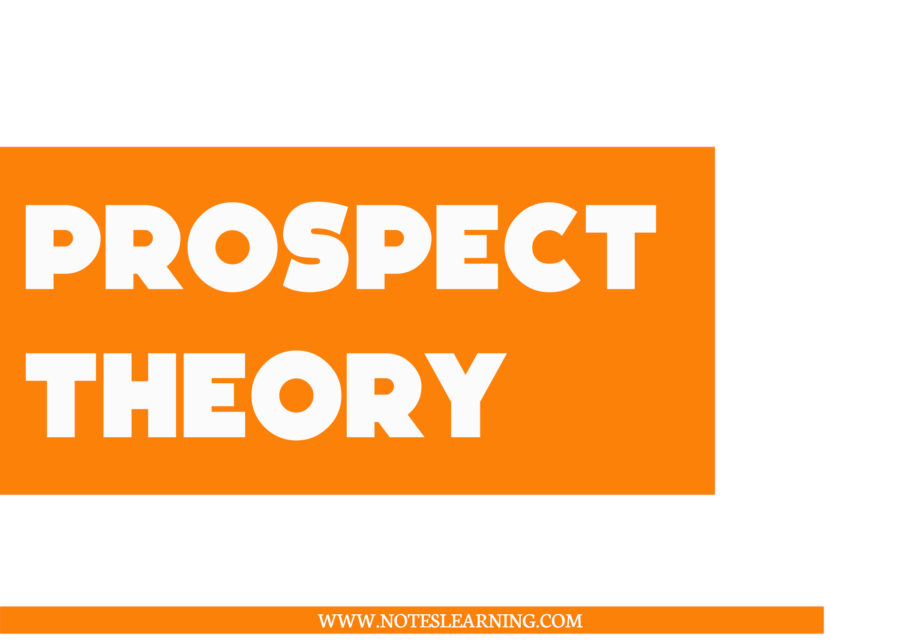Introduction
Prospect theory assumes that losses and gains are valued differently, therefore individuals make decisions based on the perceived gains instead of perceived losses. Prospect theory is also known as ‘loss-aversion theory.’
The basic concept of this theory is that if two choices are provided to an individual, both equal, with one presented in terms of potential gains and other in terms of possible losses, the individual will select the choice with possible gains.
Prospect theory describes how individuals make a choice between probabilistic alternatives where risk is involved and the probability of different outcomes is unknown.
For example, most people will prefer winning $50 with certainty rather than taking a risky bet in which they can toss a coin and either win $100 or nothing. The same people when confronted with a 100% chance of losing $50 versus a 50% chance of no loss or $100 loss – they would often choose the second option.
Key Observed Behavior
Aspect 1: People sometimes exhibit risk aversion and sometimes exhibit risk seeking, depending on the nature of the prospect.
Aspect 2: Peoples’ valuation of prospects depend on gains and losses relative to a reference point. This reference point is usually the status quo.
Aspect 3: People are averse to losses because losses loom larger than gains.
Prospect theory explains three biases people use when making decisions:
- Certainty:“This is when people tend to overweight options that are certain and risk averse for gains.”
- Isolation effect:“Refers to people’s tendency to act on information that stands out and differs from the rest.”
- Loss aversion: “When people prefer to avoid losses to acquire equivalent gains”
The key features of Prospect Theory are:
- It searches into the fact as to how individuals evaluate gains and losses.
- The theory explains that the investors’ decisions-making process has two specific phases. First phase is the ‘editing’ process in which they follow a heuristic which is ‘rule of thumb’ and rank the available alternatives. The other phase is the ‘evaluation’ phase in which investors use some reference points to evaluate their gains and losses.
- The theory explores that investors ‘frame’ the outcomes of an investment activity in a very subjective manner which affects expected utility.
Certainty
“The certainty effect happens when people overweight outcomes that are considered certain over outcomes that are merely possible.” We would rather get an assured, lesser win than taking the chance at winning more.
Which of the following options would you choose?
- 100% chance to win $900.
- 90% chance to win $1000 or nothing ($0).
With option 1, you’re assured to get $900. While with option 2, there’s a 10% chance you could get $1000 or nothing. Studies confirmed that nearly 80 percent of people will choose option 1. Despite the equal potential gain value i.e. $900, investors aversion the risks.
Since people would rather accept a small but certain reward over a mere chance at a larger gain.
The Isolation Effect
“When multiple stimuli are presented, the stimulus that differs from the rest is more likely to be remembered.”
For example: An item on a list which is a different colour, size or font is more likely to be remembered than the other normal looking listed items.
Loss Aversion Theory
Loss aversion is an important concept associated with the prospect theory and is encapsulated in the expression “losses loom larger than gains”. It is thought that the pain of losing is psychologically about twice as powerful as the pleasure of gaining. People are more willing to take risks to avoid a loss than to make a gain. Loss aversion has been used to explain the endowment effect and sunk cost fallacy, and it may also play a role in the status quo bias.
Loss Aversion is a pervasive phenomenon in human decision making under risk and uncertainty, according to which people are more sensitive to losses than gains. The human tendency to take extreme measures to avoid loss leads to some behavior that can inhibit investment success. So, the human attitude to risk and reward can be very complex and subtle, which changes over time and in different circumstances.
Loss aversion has been used to explain the endowment effect and sunk cost fallacy. It may also play a role in the status quo bias. The basic principle of loss aversion can explain why penalty frames are sometimes more effective than reward frames in motivating people and has been applied in behavior change strategies.
Loss aversion derives from our innate motive to prefer avoiding losses rather than achieving similar gains. Knowing that this bias exists and how it affects our decision making is our ultimate goal.
Loss aversion is often seen in financial markets: Some evidence that stock market investors hold their investment positions with paper losses too long and sell their investment holding paper gains too early.
Example:
- Investing solely in safe products that have little to no interest and as time passes inflation reduces/eliminates your purchasing power.
- Not selling a stock that is below the price you paid strictly because you do not want to take a loss.
- Selling a stock because it is greater than the price you paid just to lock in the profits.
- The unwillingness to sell your house for less money than you paid for it.
- Working harder and accomplishing more in an attempt to achieve a stretch goal.
- Focusing on one investment that has lost money while ignoring the other investments.
- Selling to avoid further losses when the reasoning for the investment says to buy more.
Reference


